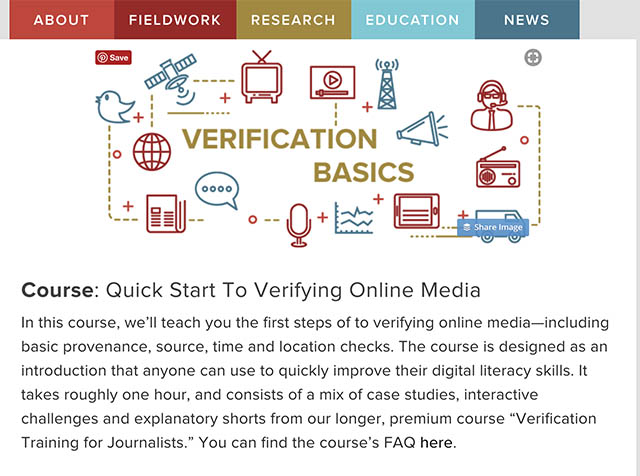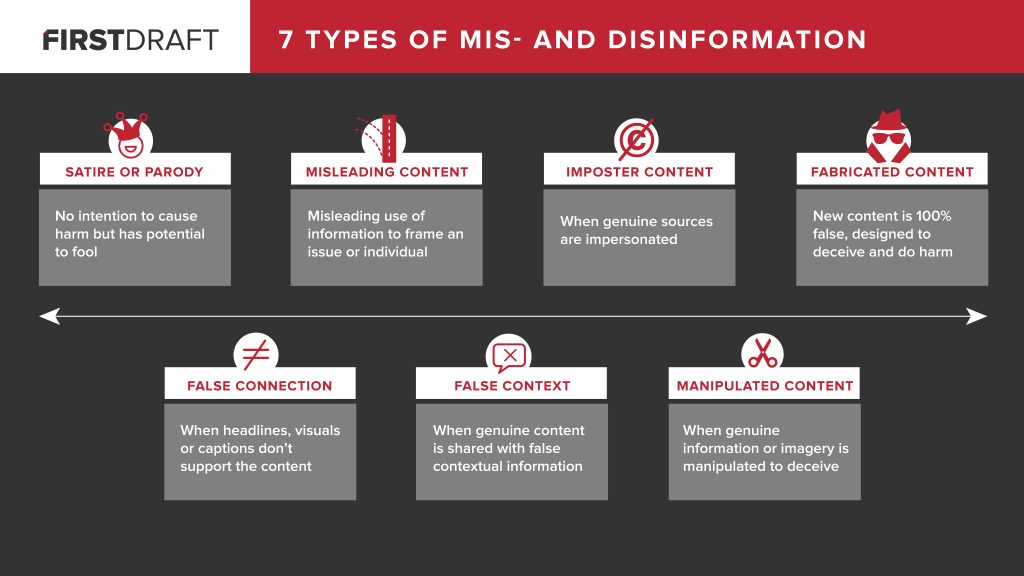Online verification training course: train ourselves to be savvy news consumers
First Draft launches its online verification training course. The course is designed as an introduction that anyone can use to quickly improve their digital literacy skills.
Fake news or misleading stories have something in common that make them successful. Firstly, they appeal to our emotions.
Secondly, they play into a worldview, which is similar to the appeal to our emotions. Stories that confirm our worldview are often the ones we are willing to share the most. I fell into this trap in the past. If I believed strongly on an issue, I tend to share news that fits my worldview. I learned that the best course of action is not to share right away. Do a triple check.
READ: Fact checking anonymous warnings
Now there is a way for anyone (not just journalists) to improve their digital literacy skills. The course in First Draft “teach you the steps involved in verifying the eyewitness media, fabricated websites, visual memes and manipulated videos that emerge on social media. The course is designed so that anyone can take the course from start to finish online, or educators can take elements and integrate into existing classroom teaching. For newsroom training managers, we hope the you can encourage your staff to take the course online, or you can take individual videos and tutorials and use during brown-bag lunches. We provide relevant and topical examples — from events such as Hurricane Irma and the conflict in Syria — to show how these skills and techniques are put into practice.”
First Draft has two courses:
1. Take a one-hour, quick-start verification course that is open to the public (Sign up)
2. Take a five-unit verification course designed for working journalists, student journalists and people who use verification for their work in human rights. (Sign up)
To get you started , the one hour, quick start verification course is ideal. You will need to sign up, to gain access to their courses and any other online resources!
Tools and resources will be provided for the recommended path.
1. Getting started
2. Provenance
3. Digital footprints and timestamps
4. Geo-location
It is important to verify information online because stories depend on information found online, often on social media. The origin of any piece of information is an essential part to any story. You need to know who created a photo, video, or website – and their intentions for creating it – in order to report the whole story.
READ: Fake news: 7 types of mis- and disinformation (Part 1)
Be a savvy news consumer. Here are 6 tips for identifying fake news (Part 2)
The Quick Start verification course takes roughly one hour, and consists of a mix of case studies, interactive challenges and explanatory shorts from their longer, premium course “Verification Training for Journalists.” If you want to take the longer five unit course, check its Course FAQ.
It’s about time to train ourselves to be savvy news consumers. Sign up for the Quick Start verification course .




